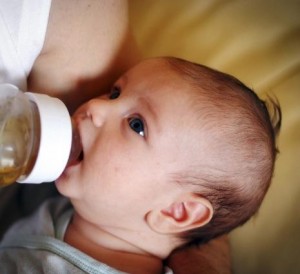Recently, New America, a non-partisan think tank from Washington, DC hosted a public forum in Minneapolis to discuss the state of our statewide education system. With help from the McKnight Foundation and others, New America conducted a study, outlined in Building Strong Readers in Minnesota report, to find out what supports are needed to foster literacy development in children across Pre-K to 3rd grade. As a Lead Preschool teacher at Way to Grow Preschool P.A.L.S. program, I naturally found myself interested in the recommendations pertaining to the accessibility to preschool and quality early learning programs.
Preschool education is a bit like organized chaos, mainly due to the mixed delivery system of programming in Minnesota – some children attend school-based programming, others receive home-based programming, and some don’t attend any programming. Addressing the significant opportunity gap we all know exists in Minnesota for our youngest children of color living in low-income areas, I’d like to expand on the first of four recommendations made by New America; to “rethink pre-k funding and quality.”
According to New America, only 10% of eligible children are currently served through the scholarship program, making Minnesota one of the worst states in the country for Pre-K access. New America has suggested that we remodel the structure of early learning scholarships to reach more children across the state. Only meeting 10% of the most vulnerable families is not enough. This means that we have families who simply don’t have access to quality preschool because they can’t afford it. How can we address our statewide educational gap if we can’t enroll the kids who need the help most? Furthermore, why does the economic disadvantage of families affect their access to quality programming?
The recommendations set forth by New America with hopes of closing the education gap in Minnesota have taken solutions from theoretical notions to practical ideas. The risks are too high to not push for these recommendations. Something must change.
I know what a child looks like when he or she enters kindergarten ready to be there. Unfortunately, I also know what a child looks like when he or she enters unprepared. Take Saabira for example. Saabira entered preschool in the middle of the school year last year as a very charismatic but behaviorally challenging 5 year old. She arrived with a language barrier and had no preschool experience. She was far behind both academically and socially.
When we met Saabira, we knew it was time to get to work! We used a number of academic intervention strategies through summer school to help her meet kindergarten readiness standards. Her family participated in more than 80% of our parent-child classes and her Family Educator worked tirelessly, visiting the family weekly. Saabira soon began to enjoy learning and practiced her literacy skills while others were playing. She came to love reading, asking to read the story of the week a few extra times. After months of hard work, she not only caught up but also surpassed some of her classmates by graduation.
We need to consider kids like Saabira, whom our system, more often than not, leaves behind. We can start by increasing early learning scholarships, thereby widening access to quality programming to get more kids through the door so learning can take place.
About the Author:
 Ashley Saupp is the Lead Teacher at Way to Grow Preschool P.A.L.S. Prior to teaching at Way to Grow, Ashley studied at The State University of New York at Potsdam where she received a Bachelor of Arts degree in English and a Master of Science degree in Childhood Education. Her previous teaching experience took place in a diverse public elementary school in New York City. While in New York, she had the privilege of completing classroom training with Columbia University’s Reading and Writing Project, a program focused on improving childhood literacy.
Ashley Saupp is the Lead Teacher at Way to Grow Preschool P.A.L.S. Prior to teaching at Way to Grow, Ashley studied at The State University of New York at Potsdam where she received a Bachelor of Arts degree in English and a Master of Science degree in Childhood Education. Her previous teaching experience took place in a diverse public elementary school in New York City. While in New York, she had the privilege of completing classroom training with Columbia University’s Reading and Writing Project, a program focused on improving childhood literacy.



